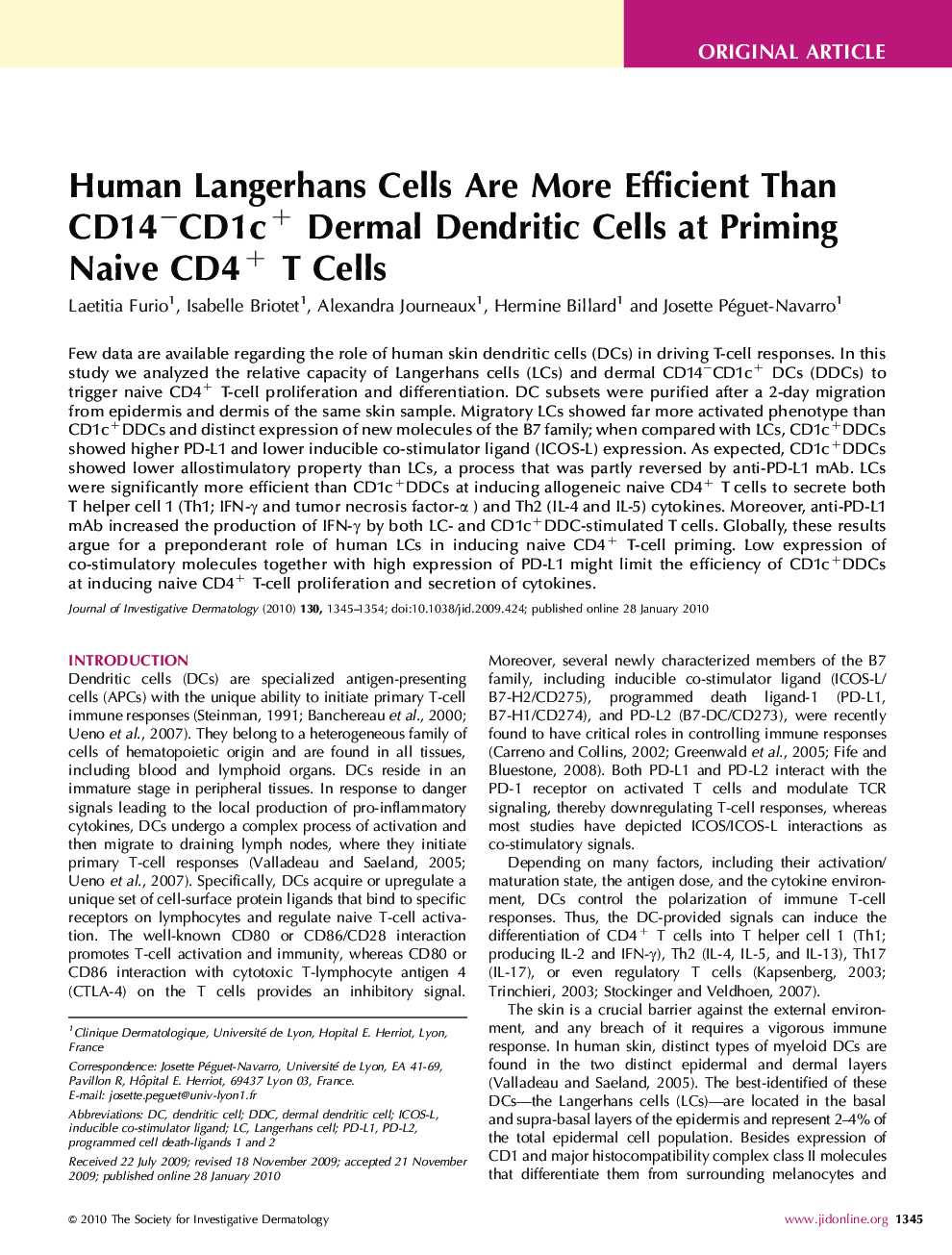| Article ID | Journal | Published Year | Pages | File Type |
|---|---|---|---|---|
| 3217099 | Journal of Investigative Dermatology | 2010 | 10 Pages |
Few data are available regarding the role of human skin dendritic cells (DCs) in driving T-cell responses. In this study we analyzed the relative capacity of Langerhans cells (LCs) and dermal CD14−CD1c+ DCs (DDCs) to trigger naive CD4+ T-cell proliferation and differentiation. DC subsets were purified after a 2-day migration from epidermis and dermis of the same skin sample. Migratory LCs showed far more activated phenotype than CD1c+DDCs and distinct expression of new molecules of the B7 family; when compared with LCs, CD1c+DDCs showed higher PD-L1 and lower inducible co-stimulator ligand (ICOS-L) expression. As expected, CD1c+DDCs showed lower allostimulatory property than LCs, a process that was partly reversed by anti-PD-L1 mAb. LCs were significantly more efficient than CD1c+DDCs at inducing allogeneic naive CD4+ T cells to secrete both T helper cell 1 (Th1; IFN-γ and tumor necrosis factor-α ) and Th2 (IL-4 and IL-5) cytokines. Moreover, anti-PD-L1 mAb increased the production of IFN-γ by both LC- and CD1c+DDC-stimulated T cells. Globally, these results argue for a preponderant role of human LCs in inducing naive CD4+ T-cell priming. Low expression of co-stimulatory molecules together with high expression of PD-L1 might limit the efficiency of CD1c+DDCs at inducing naive CD4+ T-cell proliferation and secretion of cytokines.
